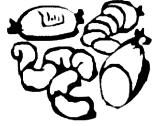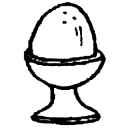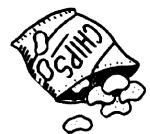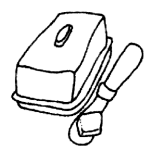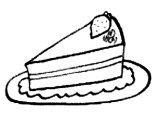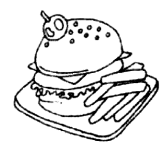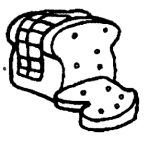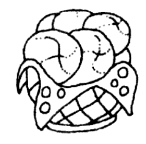Методичні рекомендації, конспекти уроків до теми "Food and drinks"
Департамент освіти і науки Київської обласної державної адміністрації
Комунальний вищий навчальний заклад Київської обласної ради
«Академія неперервної освіти»
Авторський проект
Методичні рекомендації щодо проведення уроків англійської мови з теми «Food and Drinks» у початковій школі
Підготувала:
слухач курсів підвищення кваліфікації
вчителів іноземної мови,
вчитель англійської мови
ОЗНЗ Кагарлицька ЗОШ І-ІІІ ст.№ 3
Путієнко Юлія Борисівна
Керівник: Кушнір Ярослава Анатоліївна
Біла Церква
2018
Анотація
В авторській роботі викладено теоретичний матеріал, який охоплює всю інформацію щодо проведення сучасного уроку англійської мови в початковій школі. А також представлені конспекти уроків з англійської мови для учнів 3 класу до теми: «Food and drinks». Уроки розроблено на основі інноваційних технологій (проектна технологія, навчання у співпраці, ігрове навчання) та сучасних методів навчання англійської мови в початковій школі. Серед передових методів у сучасному навчальному процесі вивчення англійської мови, велику увагу приділяють інтерактивним методам.
До інтерактивних методів навчання відносять презентацію, рольові ігри, дискусії, «мозковий штурм», конкурси з практичними завданнями та їх подальше обговорення, проведення творчих заходів, використання мультимедійних комп’ютерних програм.
Гра – найбільш доступний для учнів початкової школи вид діяльності, спосіб переробки отриманих із зовнішнього світу вражень. У грі яскраво проявляються особливості мислення та уяви, емоційність, активність, розвиваюча потреба в спілкуванні. Цікава гра підвищує рівень активності учня, і він може вирішити більш складну задачу, ніж на звичайному занятті. Але це не свідчить про те що всі заняття повинні проходити в формі гри. Гра – це тільки один з методів, і вона дає гарні результати тільки у поєднанні з іншими: аудіюванням, бесідами, читанням, тощо.
Вступ
Педагогічна наука розглядає процес навчання як свідому й цілеспрямовану умисну діяльність учителя та учнів. В сучасній школі ця діяльність здебільшого проходить в рамках уроку, який доповнюється самостійними заняттями вдома, позакласною роботою та факультативними заняттями предмета.
Урок іноземної мови, як основна організаційна одиниця навчального процесу, є його частиною і водночас самостійною, цілісною ланкою. До нього ставляться ті ж загально дидактичні й методичні вимоги, що й до всього навчального процесу. В ньому синтезуються закономірності навчання, органічно взаємодіють цілі, зміст і методи. Він реалізує методичну концепцію, покладену в основу навчання. Тому проблеми уроку звичайно розглядають разом з питаннями методики та організації системи уроків.
Інтенсифікація навчального процесу вимагає пошуку та використання нових форм, методів та технологій викладання й навчання, засобів підтримки в учнів інтересу до матеріалу і активізації їх пізнавальної діяльності. Нині українська школа активно реформується. Ці зміни особливо значні в системі мовної освіти. Зміст викладання англійської мови як системи знань, умінь та навичок має сприяти розвитку мовних компетенцій учнів, формуванню світогляду, моралі та поведінки, готуючи до життя в багатокультурному суспільстві.
На мою думку однією з актуальних проблем сучасної методики викладання іноземних мов є організація навчання дітей різних вікових груп за допомогою ігрових форм. В даній роботі відображено різні види ігрових форм роботи, які найбільш широко використовуються на уроках іноземної мови. Але ігри не замінюють інші форми і види роботи на уроці, а тільки доповнюють їх, допомагають розвивати мовленнєву компетенцію. Тому упровадження досвіду спрямоване на використання ігрових форм роботи як засобу формування комунікативної компетенції школярів.
Практична реалізація досвіду засвідчила, що ефективно використовувати ігри можна, здійснивши їх класифікацію. В теоретичній частині подається технологія використання ігор.
У практичній частині своєї роботи я пропоную конспекти уроків з англійської мови на тему “Food and drinks”, де показано використання різних ігрових форм.
Ці конспекти уроків я розробила, взявши за основу кращий матеріал з різних НМК та українських підручників, а також використавши інноваційні технології навчання англійської мови. У своїх роботах використала традиційні педагогічні технології, педагогічні технології на основі активізації та інтенсифікації діяльності учнів.
В своїй роботі застосовую словесний, наочний та практичний методи.
Topic: “Fruit and Vegetables”
THE PROCEDURE OF THE LESSON
I. Organising the Class. Greeting
1) “Toss the String” ( Icebreaker game)
Pupils sit in a circle for this icebreaker. The teacher gives the ball of string or yarn to one of the pupils. He/She finds the end and holds onto it for the remainder of the game.
To start the game, she'll toss the ball to someone else in the circle. Then she'll ask that person a question (e.g. What’s your favourite colour? What’s your favourite sport? Do you like ..? etc.). Next, the pupil with the ball holds part of the yarn and tosses the ball to some else that hasn't had it yet. The game continues like this until everyone has had a chance to answer a question. At the end of the game, have all the pupils look at the web that they've created that has connected all the players together in one way.
2) Introducing the Topic
- The teacher plays the recording. Pupils listen and try to guess the subject of the lesson.
Eat five fruits and vegetables every day,
Five fruits and vegetables, so they say.
Makes you feel happy, healthy and strong.
Five fruits and vegetables all day long.
How about a shoe, is that a fruit or a vegetable?
How about a stick? How about a banana?
How about broccoli?
Eat five fruits and vegetables every day,
Five fruits and vegetables, so they say.
Makes you feel happy, healthy and strong.
Five fruits and vegetables all day long.
The teacher helps (if necessary).
- T: As you may have already guessed, today we are going to speak about fruit and vegetables. We will learn to describe them, discuss our favourite fruit/vegetables, play games etc. Ready? So, let’s start our lesson!
II. Warming up: The teacher plays the game “Slow Reveal!” using some food words (fruit and vegetables) that pupils know to stimulate the class at the beginning of the lesson and to prepare them for learning:
- The teacher puts a flashcard on the board and covers it with a piece of paper or card.
- Very slowly the teacher moves the paper to reveal the picture, bit by bit.
- The teacher asks pupils “What’s this?” The first pupil to guess correctly comes to the front to choose the next card.
- The teacher continues the game until she has practised all of the words from the vocabulary set: apple, orange, pear, plum, etc.
III. Presenting Vocabulary:
- The teacher tells the pupils that they are going to learn the names of some more fruit and vegetable items.
- The teacher uses some flashcards to elicit the vocabulary for this lesson. She/He holds the flashcards up one at a time and models any words the pupils don’t know.
- The teacher says all the words again for pupils to repeat:
Fruit: apple, banana, orange, lemon, peach, plum, apricot, pear, grapes, pineapple, mango, strawberry, raspberry, coconut, melon, watermelon, kiwi;
Vegetables: tomato, potato, cucumber, carrot, cabbage, onion, pepper, pumpkin, radish, parsley, lettuce, broccoli, peas, garlic, eggplant
IV. Practising Vocabulary: The game “What’s missing?”
- The teacher displays the flashcards from the vocabulary set on the board. She points to each one in turn for pupils to say the words. The teacher gives the class a few seconds to look at them.
- Pupils turn around and the teacher removes a card.
- The teacher displays the cards again and asks “What’s missing?” When pupils have identified the missing card, the teacher shuffles the cards again and repeats the procedure.
V. Relaxation: Ps recite the poem “Jelly on the plate” and do some actions:
Jelly on the plate,
Jelly on the plate,
Wibble, wobble
Wibble, wobble
Jelly on the plate!
VI. Vocabulary Drill:
1) Fruit:
- Ps read the sentences carefully and try to guess the name of the fruit:
1. A sour, yellow fruit – orange, banana, lemon, cherry
2. A long, thin fruit – watermelon, apricot, banana, strawberry
3. White on the inside, red, yellow or green on the outside – apple, peach, melon, grapes
4. A round orange fruit – strawberry, cherry, orange, plum
5. Green on the outside and pink or red on the inside – melon, grapes, watermelon, peach
6. A sweet red fruit – strawberry, pear, banana, pineapple
(Addition 1)
2) Vegetables:
a) Pupils unscramble the vocabulary words in the list below, then circle or highlight each of the matching words hidden in the rings of the puzzle.
abbegac____________
oarctr_____________
cipepreihlp__________
cuembcur___________
egnlagpt____________
iargcl______________
eingrg______________
muoroshm___________
nnioso______________
totpoa______________
kmpniup____________
tomtoa_____________
(Addition 2)
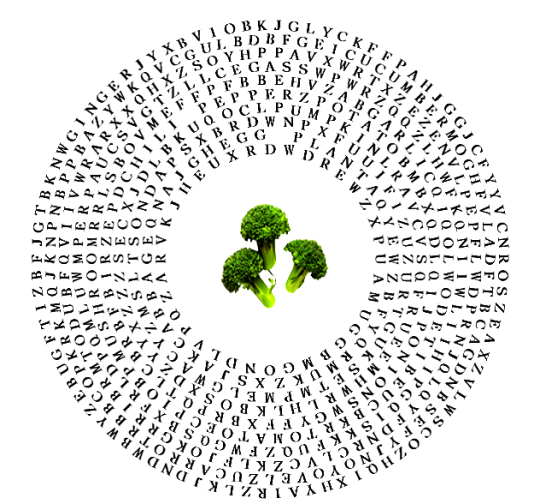
b) Pupils choose the correct spelling of the word that matches the picture and circle the letter of their choice:
|
A. mushroom |
B. mushruom |
C. mushrom |
D. musshroom |
|
|
A. egg plant |
B. eg plant |
C. egg plannt |
D. egg pllant |
|
|
A. cucumber |
B. kucumber |
C. cukumber |
D. cuczumber |
|
|
A. putato |
B. potato |
C. potatu |
D. potbato |
|
|
A. cabbag |
B. cabage |
C. cabbage |
D. kabbage |
|
|
A. tumato |
B. tomatu |
C. tomato |
D. tomatoa |
|
|
A. carrot |
B. carrut |
C. carot |
D. karrot |
|
|
A. garlic |
B. garllic |
C. garlik |
D. garlc |
|
|
A. chili pepper |
B. chili peper |
C. chilli pepper |
D. khili pepper |
|
|
A. unions |
B. onions |
C. onoins |
D. onnions |
|
VII. Home Assignment:
T: We are coming up to the end of our lesson. Write down your homework, please
- Ps have to learn the new words by heart;
- Project “Fruit/Vegetable Salad”
The teacher divides the pupils into two teams:
Team 1 – “Fruit” (Ps have to make a fruit salad)
Team 2 – “Vegetables” (Ps have to make a vegetable salad)
T: For the next lesson you have to color the fruit/vegetables and the bowl, cut the colored fruit/vegetables and mix them in the bowl, making a nice fruit/vegetable salad.
3) T: Keep a fruit and vegetables diary for one week. Write all the fruit and vegetables you eat at each meal.
(Additions 3-6)
VIII. Summing-up:
T.: You've done good work today. I'm very pleased with you! The lesson is over. Goodbye, pupils!
Addition 1
|
Fruit: Read the sentences carefully and try to guess the name of the fruit: |
|
1. A sour, yellow fruit – orange, banana, lemon, cherry 2. A long, thin fruit – watermelon, apricot, banana, strawberry 3. White on the inside, red, yellow or green on the outside – apple, peach, melon, grapes 4. A round orange fruit – strawberry, cherry, orange, plum 5. Green on the outside and pink or red on the inside – melon, grapes, watermelon, peach 6. A sweet red fruit – strawberry, pear, banana, pineapple |
----------------------------------------------------------------------------------------------------
|
Fruit: Read the sentences carefully and try to guess the name of the fruit: |
|
1. A sour, yellow fruit – orange, banana, lemon, cherry 2. A long, thin fruit – watermelon, apricot, banana, strawberry 3. White on the inside, red, yellow or green on the outside – apple, peach, melon, grapes 4. A round orange fruit – strawberry, cherry, orange, plum 5. Green on the outside and pink or red on the inside – melon, grapes, watermelon, peach 6. A sweet red fruit – strawberry, pear, banana, pineapple |
Addition 2
Vegetables: Unscramble the vocabulary words in the list below, then circle or highlight each of the matching words hidden in the rings of the puzzle.
abbegac____________
oarctr_____________
cipepreihlp__________
cuembcur___________
egnlagpt____________
iargcl______________
eingrg______________
muoroshm___________
nnioso______________
totpoa______________
kmpniup____________
tomtoa_____________

Addition 3
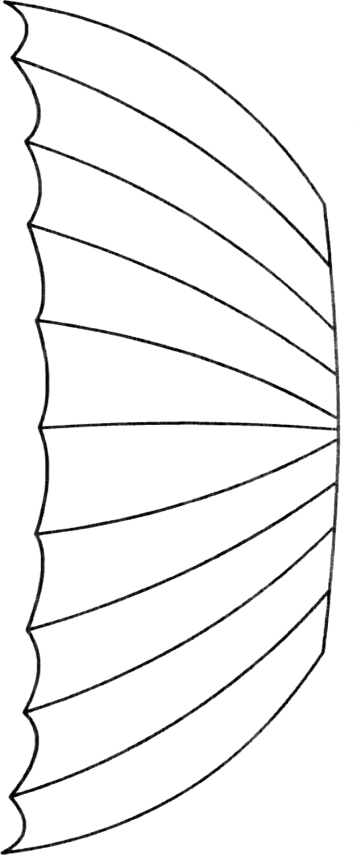
Addition 4
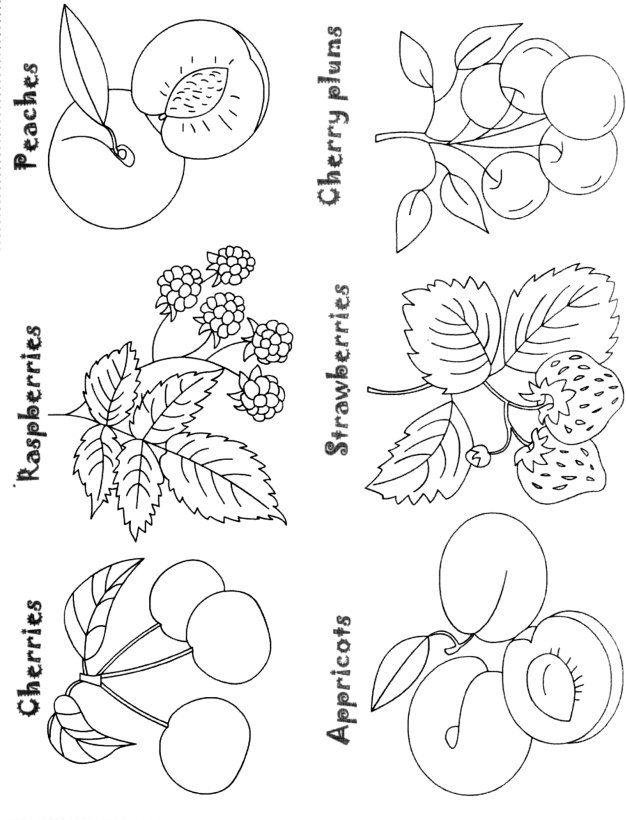
Addition 5

Addition 6
MY FRUIT AND VEGETABLES DIARY
|
|
Breakfast |
Lunch |
Dinner |
|
Monday |
|
|
|
|
Tuesday |
|
|
|
|
Wednesday |
|
|
|
|
Thursday |
|
|
|
|
Friday |
|
|
|
|
Saturday |
|
|
|
|
Sunday |
|
|
|
MY FRUIT AND VEGETABLES DIARY
|
|
Breakfast |
Lunch |
Dinner |
|
Monday |
|
|
|
|
Tuesday |
|
|
|
|
Wednesday |
|
|
|
|
Thursday |
|
|
|
|
Friday |
|
|
|
|
Saturday |
|
|
|
|
Sunday |
|
|
|
Topic: Food and drinks in the Great Britain
The Procedure of the Lesson
I. Organising the Class. Greeting
T: Good morning, pupils!
Ps: Good morning, teacher!
Good morning to you! (2)
We’re all at our places
With sunshiny faces,
Good morning to you!
We’re glad to see you!
T: I’m glad to see you, too. How are you?
Ps: We’re super,
Yes, we do!
We’ve got spirits,
And what about you?
T: I’ve got spirits, too. So, let’s start our lesson!
II. Warmer: “Apples and bananas”
1. The teacher tells the pupils that they are going to learn a song about likes and dislikes (and explains both words).
2. The teacher presents the picture cards and writes the words under them on the board.
3. Pupils practice saying the words (choral repetition).
4. The teacher sings the song pointing to the pictures as they come along.
5. The teacher sings the song a few times but having the pupils join in.
Apples and Bananas
I like to eat, eat, eat apples and bananas
I like to eat, eat, eat apples and bananas
I like to ate, ate, ate, ay-ples and bay-nay-nays (2 times)
I like to eat, eat, eat ee-ples and bee-nee-nees (2 times)
I like to ite, ite, ite i-ples and by-ny-nys (2 times)
I like to ote, ote, ote, oh-ples and bo-no-nos (2 times)
I like to oot, oot, oot, oo-ples and boo-noo-noos (2 times)
(Addition 1)
III. Vocabulary Drill: The Memory Game “What’s on the tray?”
- The teacher takes some plastic food items and lays them on a tray for pupils to see.
- The pupils pass the tray around.
- The teacher removes the tray from sight and pupils write the list what was on the tray. The person that lists the most objects is the winner.
IV. Homework Checking:
- Some of the pupils present their projects.
- “Tasting the colour”
- The teacher cuts foods the pupils have brought into small pieces so that every pupil has a bite.
- The teacher tells the pupils that they are going to play a game “Taste the colour”. The task is to taste the food with the eyes blindfolded and answer the questions. For example: How does it taste? (sweet, sour, salty, bitter) What colour is it? What is it?, etc.
V. Reading Comprehension:
- Pre-Reading:
- Food Picture Test
Pupils look at the pictures, then read and match:
|
|
bread buns butter cake cheese chips egg hamburger ice cream sausages |
|
(Addition 2)
2) The teacher pre-teaches some words: bacon, course, dessert, snack, porridge
3) “The Mexican Wave Chant”
The teacher does a Mexican wave round the classroom using food language to see how quickly the wave can go round the whole room.
S1 stands up and says: Pizza and ... .
S1 sits down.
S2 stands up and says: Salad. Chicken and ...
S2 sits down.
S3 stands up and says: Rice. etc.
- While-Reading: Pupils read the text silently
Food and Drink in Britain
What do English children eat?
In England most children don’t eat a traditional English breakfast of bacon and eggs every day. They eat cereal like cornflakes with milk. Some families like to eat porridge especially on cold winter days.
At about 11 o’clock many children eat a snack or some fruit. Lunch is at about half past twelve. There are usually two courses. The main course is meat or fish with vegetables.
After the main course, they eat a dessert. The dessert is usually sweet. Children in England don’t drink wine or beer. They usually drink water or fruit juice. When children come home from school, they have tea. They eat bread and butter with jam. They eat dinner in the evening at about 8 o’clock. Dinner is usually a main course and a dessert.
Children often drink hot chocolate milk before they go to bed.
(Addition 3)
- Post-Reading:
1) T: Find the words in the text to complete the missing words in these sentences.
1 It’s very cold today. Do you want p__________ for breakfast?
2 There is no school today because it is Saturday. Tom is eating a traditional English b__________ of bacon and eggs.
3 I always eat some f_______ at 11 o’clock. Today I have an apple.
4 The children usually have their l_________ at half past twelve.
5 Today they are having roast beef for their main c________.
6 Mother has made a chocolate pudding for d_________.
7 The children are going to drink apple j________.
8 I put some strawberry j_____ on my bread and butter.
9 We’re going to have f______ and chips for dinner.
10 My sister doesn’t drink hot chocolate m______ before she goes to bed.
Answers
1. porridge
2. breakfast
3. fruit
4. lunch
5. course
6. dessert
7. juice
8. jam
9. fish
10. milk
(Addition 4)
VI. Homework Setting:
Pupils have to make a poster “Food and Drink in Ukraine”
- Pupils find information about eating habits in Ukraine (they can use the internet, etc.)
- Pupils make notes under the headings “Breakfast”, “Lunch” and “Dinner”.
- Pupils find pictures of foods to decorate their posters.
VII. Summarising. Evaluation
T: Did you like the lesson? What did you like? You were very active during the lesson, so all of you deserve good marks. The lesson is over. Goodbye, pupils!
Addition 1
Apples and Bananas
I like to eat, eat, eat apples and bananas
I like to eat, eat, eat apples and bananas
I like to ate, ate, ate, ay-ples and bay-nay-nays (2 times)
I like to eat, eat, eat ee-ples and bee-nee-nees (2 times)
I like to ite, ite, ite i-ples and by-ny-nys (2 times)
I like to ote, ote, ote, oh-ples and bo-no-nos (2 times)
I like to oot, oot, oot, oo-ples and boo-noo-noos (2 times)
--------------------------------------------------------------------------------------------------
Apples and Bananas
I like to eat, eat, eat apples and bananas
I like to eat, eat, eat apples and bananas
I like to ate, ate, ate, ay-ples and bay-nay-nays (2 times)
I like to eat, eat, eat ee-ples and bee-nee-nees (2 times)
I like to ite, ite, ite i-ples and by-ny-nys (2 times)
I like to ote, ote, ote, oh-ples and bo-no-nos (2 times)
I like to oot, oot, oot, oo-ples and boo-noo-noos (2 times)
Addition 2
|
|
bread buns butter cake cheese chips egg hamburger ice cream sausages |
|
Additions 3-4
|
Food and Drink in Britain What do English children eat? In England most children don’t eat a traditional English breakfast of bacon and eggs every day. They eat cereal like cornflakes with milk. Some families like to eat porridge especially on cold winter days. At about 11 o’clock many children eat a snack or some fruit. Lunch is at about half past twelve. There are usually two courses. The main course is meat or fish with vegetables. After the main course, they eat a dessert. The dessert is usually sweet. Children in England don’t drink wine or beer. They usually drink water or fruit juice. When children come home from school, they have tea. They eat bread and butter with jam. They eat dinner in the evening at about 8 o’clock. Dinner is usually a main course and a dessert. Children often drink hot chocolate milk before they go to bed. |
|
1 It’s very cold today. Do you want p__________ for breakfast? 2 There is no school today because it is Saturday. Tom is eating a traditional English b__________ of bacon and eggs. 3 I always eat some f_______ at 11 o’clock. Today I have an apple. 4 The children usually have their l_________ at half past twelve. 5 Today they are having roast beef for their main c________. 6 Mother has made a chocolate pudding for d_________. 7 The children are going to drink apple j________. 8 I put some strawberry j_____ on my bread and butter. 9 We’re going to have f______ and chips for dinner. 10 My sister doesn’t drink hot chocolate m______ before she goes to bed. |
Список використаної літератури
-
Методичні рекомендації щодо викладання іноземних мов у 2017/2018 навчальному році. /Додаток до листа Міністерства освіти і науки України
від 09.08.2017 р. № 1/9-436 //https://www.schoollife.org.ua/shhodo-metodychnyh-rekomendatsij-pro-vykladannya-navchalnyh-predmetiv-u-zagalnoosvitnih-navchalnyh-zakladah-u-2017-2018-navchalnomu-rotsi/ - «Навчальні програми з іноземних мов для загальноосвітніх навчальних закладів і спеціалізованих шкіл із поглибленим вивченням іноземних мов 1-4 класи», К., 2016 р. – 89 с.
- Сучасний урок: традиційні та інноваційні підходи / Укл. О.О. Байназарова, І.В.Капустін, З.В. Рябова, Л.Д. Покроєва, С.Б. Ставицький; За заг. ред. Л.Д. Покроєвої. – Харків: ХОНМІБО, 2006.
- Близнюк О.І. Ігри у навчанні іноземних мов : посібник для вчителів / О. І. Близнюк, Л. С. Панова. - К. : Освіта, 1997. - 64 с.
- Павлюк Ф.В. 200 ігор на уроках англійської мови. – Тернопіль: Мандрівець, 2002.- 56 с.
- Методи навчання школярів на уроках іноземної мови [Електронний ресурс]
/ курсова робота/ - 2011.- Режим доступу: http://www.bestreferat.ru/referat-216310.html
- Філіна Т.В. Сучасні тенденції впровадження інноваційних технологій на уроках англійської мови в початковій школі [Електронний ресурс] / Т.В.Філіна // Презентація. – 2013. - Режим доступу: http://ru.calameo.com/read/00124100906e3fe2f85ff


про публікацію авторської розробки
Додати розробку










